
Elon Musk has updated the X logo again and everyone said the same thing
The logo of “X” (formerly known as Twitter) has changed again and everyone is saying the same thing. Since Elon Musk took over the social media platform Twitter, he has implemented some major changes, one of the biggest being a complete rebrand to “X” which left industry experts baffled. As part of the rebrand, the iconic logo of 17 years was changed from the famous sky blue and white bird logo to a black and white X that some have compared to resembling a porn site. Now, Musk has made another update to the default app icon logo, adding some white marks to the black background behind the X to give it a kind of worn grunge effect. But, the subtle change has been mercilessly mocked by X users and simply left everyone increasingly yearning to have the old bird logo back. Sign up to our free Indy100 weekly newsletter “Impressive how they managed to make it look ever tackier,” one person argued. Another said: “Not the f**king grunge_overlay_04.png texture.” Someone else wrote: “Well it’s def not beating porn site allegations any time soon.” Among the criticism, others called for the app logo to be changed back to its original state. “They should update to this,” one person wrote. According to the number of likes the tweet has garnered, it would appear thousands of others agree. Have your say in our news democracy. Click the upvote icon at the top of the page to help raise this article through the indy100 rankings.
2023-08-15 19:26

Alberta Will Never Comply with Federal Clean Power Grid Plan, Premier Vows
Alberta will never comply with a federal plan to phase out carbon emissions from power generation by 2035
2023-08-15 05:57

Scientists discover continent that had been missing for 375 years
Geoscientists discovered a continent that had been hiding in plain sight for almost 375 years. Historically, there's been speculation about whether a continent known as Zealandia or Te Riu-a-Māui in the Māori language exists. According to TN News, Zealandia is 1.89 million square miles in size. It was part of a supercontinent called Gondwana, which included most of Western Antarctica and Eastern Australia, over 500 million years ago. It was first said to be first discovered in 1642 by Dutch businessman and sailor Abel Tasman, who was desperate to uncover the "Great Southern Continent". Despite failing to find the new land, he met the local Māori, who were initially displeased by his arrival. However, they went on to provide valuable information about the surrounding land, including the existence of a large landmass to the east. Sign up for our free Indy100 weekly newsletter It wasn't until 2017 that geologists discovered the continent had been hiding in plain sight all along. Scientists agreed on the existence of Zealandia, which started to "pull away" from Gondwana for reasons scientists are still trying to understand. Most of the newfound continent is underwater and has been used as an example by geologists at the Zealand Crown Research Institute GNS Science on how something "very obvious" can take a while to uncover. "[It's] a process which we don't completely understand yet, Zealandia started to be pulled away," Tulloch explained. His colleague Nick Mortimer, who led the study, joked that it was "kind of cool" before explaining: "If you think about it, every continent on the planet has different countries on it, [but] there are only three territories on Zealandia." Have your say in our news democracy. Click the upvote icon at the top of the page to help raise this article through the indy100 rankings.
2023-08-14 22:17

Experts have pinpointed exactly when society will collapse
A prediction about when society is most likely to collapse, made by scientists in the 1970s, has resurfaced – and it looks pretty bleak. Scientists at the Massachusetts Institute of Technology (MIT) used a computer to model patterns like population, natural resources and energy usage. The study, published by Club of Rome, picked out when these factors could hit “limits to growth”, which they said could lead to the downfall of modern life as we know it. They think we’ve got fewer than two decades left, with collapse due in 2040. Gulp. Sign up to our free Indy100 weekly newsletter At the time, the report wasn’t given much credence. But a similar study was carried out in 2009, and came up with similar results. Published by American Scientist, the more recent study found that the model’s results were “almost exactly on course”. "It is important to recognise that its predictions have not been invalidated and in fact seem quite on target. We are not aware of any model made by economists that is as accurate over such a long time span," the study said. And to make matters worse, Dutch sustainability researcher Gaya Herrington concurred with the prediction in 2021. Speaking to The Guardian, Herrington said: “From a research perspective, I felt a data check of a decades-old model against empirical observations would be an interesting exercise.” Herrington found that data aligned with the predictions made back in 1972, which had a worse case scenario of economic growth coming to halt at the end of this decade, and collapse around 10 years later. Thankfully, there was a reason to be cheerful too. She added: “The key finding of my study is that we still have a choice to align with a scenario that does not end in collapse. "With innovation in business, along with new developments by governments and civil society, continuing to update the model provides another perspective on the challenges and opportunities we have to create a more sustainable world.” Have your say in our news democracy. Click the upvote icon at the top of the page to help raise this article through the indy100 rankings.
2023-08-14 19:16
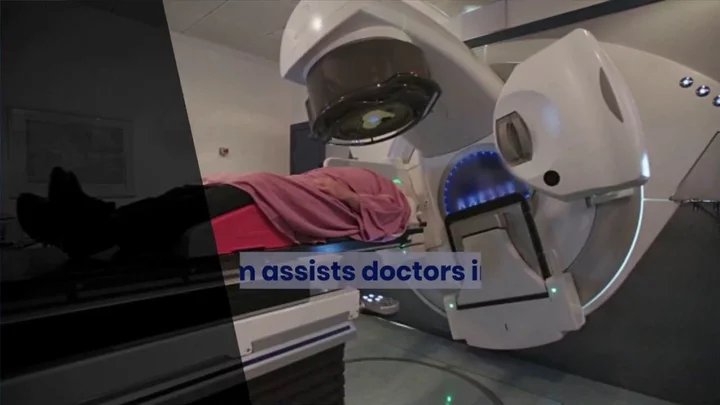
AI could soon be used to treat cancer in the NHS
Artificial intelligence could soon be used to perform radiotherapy to treat certain cancers for the first time. Draft guidance from the National Institute for Health and Care Excellence (Nice) has given approval to nine AI technologies for performing external beam radiotherapy in lung, prostate and colorectal cancers, which could save radiographers hundreds of thousands of hours and help relieve pressure on radiotherapy departments. Currently therapeutic radiographers outline healthy organs on digital images of a CT or MRI scan by hand so that the radiotherapy does not damage healthy cells by minimising the dose to normal tissue. Nice found that using AI to create the contours could free up between three and 80 minutes of radiographers’ time for each treatment plan, and that AI-generated contours were of a similar quality to manually drawn ones. Nice said that the contours would still be reviewed by a trained healthcare professional. It comes after a study found AI was safe to use in breast cancer screenings with evidence growing that it can be more effective in detecting cancers. Sign up to our free Indy100 weekly newsletter Meanwhile, Nice said it was also examining the evidence for using AI in stroke and chest scans. Dr Sarah Byron, the programme director for health technologies at Nice, said using AI could help reduce waiting lists. She added: “NHS colleagues working on the frontline in radiotherapy departments are under severe pressure with thousands of people waiting for scans. “The role imaging plays in radiotherapy treatment planning is quite pivotal, so recommending the use of AI technologies to help support treatment planning alongside clinical oversight by a trained healthcare professional could save both time and money. “We will continue to focus on what matters most and the recommendations made by our independent committee can help to bring waiting lists down for those needing radiotherapy treatment.” The health secretary, Steve Barclay, welcomed the announcement. He said: “It’s hugely encouraging to see the first positive recommendation for AI technologies from a Nice committee, as I’ve been clear the NHS must embrace innovation to keep fit for the future. “These tools have the potential to improve efficiency and save clinicians thousands of hours of time that can be spent on patient care. Smart use of tech is a key part of our NHS long-term workforce plan, and we’re establishing an expert group to work through what skills and training NHS staff may need to make best use of AI.” Charlotte Beardmore, the executive director of professional policy at the Society of Radiographers, welcomed the draft guidance but said it was not a replacement for staff and caution was needed. “It is critical there is evidence to underpin the safe application of AI in this clinical setting,” she said. Using AI would still require input by a therapeutic radiographer or another member of the oncology multi-professional team, she added. “Investment in the growth of the radiography workforce remains critical.” Science is pretty amazing. Have your say in our news democracy. Click the upvote icon at the top of the page to help raise this article through the indy100 rankings.
2023-08-11 18:21

How the Maui Wildfires Became So Destructive, So Fast
At least 55 people are dead and hundreds of homes incinerated after tail winds from a hurricane stoked
2023-08-11 18:21

Scientists are cutting open parasitic eggs from 200 million years ago
A 200 million-year-old parasite has been discovered in fossilised poo, in the latest not-at-all-scary instance of scientists unearthing a species which blighted the Earth in ancient times. Researchers found that the earliest predators on the planet were infested with roundworm, also known as nematodes, among multiple other parasites. The fossilised poo, which is known to palaeontologists as coprolite, is thought to belong to a type of semi-aquatic phytosaur, which was a crocodile-like predator. Sign up to our free Indy100 weekly newsletter It comes weeks after another team revived a prehistoric worm – the catchily named Panagrolaimus kolymaensis – which was found dormant in the Siberian permafrost in a state of “cryptobiosis”. The latest study saw researchers from Mahasarakham University, Thailand, analyse a three-inch-long portion of ancient poo and discover five types of parasitic remnants. The group sliced open the parasitic egg fossils with a diamond saw using a “standard thin section method,” their report said. The ultra-thin slices allowed the palaeontologists to look at cross-sections of the ancient infectious microbes under a microscope. One was identified as a nematode worm egg, while the others are thought to be either more eggs, protozoan cysts or spores from moss and ferns. While modern parasites are often an important part of ecosystems, it is usually more difficult to work out what their ancient equivalents did, because there are so few examples in the fossil record. The creatures often inhabited the soft tissues of their hosts, but are rarely preserved as fossils, making the latest discovery all-the-more significant. This fossilised late Triassic-era coprolite (the poo), was shielded from the elements in the Huai Hin Lat geological formation in Thailand, which is over 200 million years old. It was found by local villagers, according to the study's lead author, paleontologist Thanit Nonsrirach. “The peculiar appearance of these findings intrigued the villagers, who considered them potentially auspicious and capable of bestowing good luck if repurposed as talismans,” Nonsrirach told news outlet Inverse. “In 2010, our team received word of this discovery and embarked on a field expedition, guiding the villagers to the actual fossil site.” The discovery is the first record of parasites in a terrestrial vertebrate host from the late Triassic period in Asia, and provides a rare look at the life of an ancient creature that was infected by multiple species. This discovery also adds to the few known examples of nematode eggs preserved within the coprolites of Mesozoic animals. “Parasites of several species, including Ascaridida (roundworm) eggs were found in a coprolite, probably produced by a crocodile-like reptile and possibly a phytosaur,” said Nonsrirach, who works at Mahasarakham University's Palaeontological Research and Education Center. “This is therefore the first discovery of Ascaridida eggs and evidence of multi-infection in a host assignable to the Crurotarsi from the Late Triassic of Asia. “Coprolite is a significant palaeontological treasure trove, containing several undiscovered fossils and expanding our understanding of ancient ecosystems and food chains. “These findings are therefore a significant contribution to scientific understanding of the distribution and ecology of parasites of the distant past.” Have your say in our news democracy. Click the upvote icon at the top of the page to help raise this article through the indy100 rankings.
2023-08-11 18:21
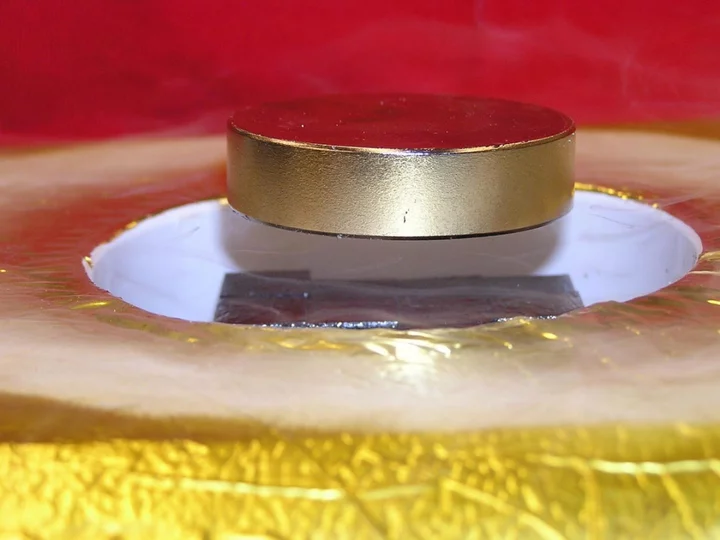
Odd ‘demon’ particle found inside superconductor may help demystify ‘holy grail’ of physics
Scientists have finally found a “demon” subatomic particle that was predicted to exist nearly seven decades ago and speculated to play an important role in the behaviours of a range of metals and alloys, including superconductors. Physcist David Pines in 1956 theorised that electrons, which normally have a mass and negative electric charge, can under some conditions combine to form a composite “demon” particle that is massless, neutral and does not interact with light. These theorised interesting properties, however, made these particles elude detection – until now. After a nearly 70-year search for these subatomic entities, researchers, including those from the University of Illinois Urbana-Champaign, have finally found signatures of Dr Pines’ “demon” particles in the metal strontium ruthenate. “Demons have been theoretically conjectured for a long time, but experimentalists never studied them. In fact, we weren’t even looking for it. But it turned out we were doing exactly the right thing, and we found it,” study co-author Peter Abbamonte said. Electrons – which are distributed in different energy bands within atoms – are known to lose their individuality in solids with electric interactions making the particles combine to form collective units. With some threshold energy, studies have also shown electrons can form composite particles called plasmons with a new charge and mass. However, the mass is so large that these plasmon particles cannot form with the kind of energies available at room temperature. Revelations on room-temperature semiconductors are considered to be one of the “holy grails” of physics. But Dr Pines theorised that if a solid has electrons in more than one energy band, as many metals do, their respective plasmons may combine in an out-of-phase pattern to form a new plasmon that is massless and neutral – a demon. Since these special particles are massless, he argued they can form with any energy and may exist at all temperatures – leading to speculation that the demons have important effects on the behaviour of some metals with multiple energy bands. “The vast majority of experiments are done with light and measure optical properties, but being electrically neutral means that demons don’t interact with light,” Dr Abbamonte explained. So a completely new experiment was needed to detect them. In the research, scientists were studying the compound strontium ruthenate as it is similar to high-temperature superconductors – a special kind of material where electrical resistance vanishes. For a survey of the metal’s electronic properties, they synthesised high-quality samples of the metal. They then applied a technique to study the metal that uses energy from electrons shot into the metal to directly observe the metal’s features, including plasmons that form. During their observation of the electron interactions, scientists found something unusual – an electronic mode with no mass. “At first, we had no idea what it was. Demons are not in the mainstream. The possibility came up early on, and we basically laughed it off. But, as we started ruling things out, we started to suspect that we had really found the demon,” Ali Husain, another author of the study, said. Researchers then sought to calculate how electrons are distributed across bands inside strontium ruthenate. Predictions by Dr Pines indicate there are specific conditions when “demons” are likely to form, and it remained unknown whether strontium ruthenate would have the particle. “We had to perform a microscopic calculation to clarify what was going on. When we did this, we found a particle consisting of two electron bands oscillating out-of-phase with nearly equal magnitude, just like Pines described,” found Edwin Huang, another author of the study. “Our study confirms a 67-year-old prediction and indicates that demons may be a pervasive feature of multiband metals,” scientists wrote in the study. Read More Superconductor breakthrough could represent ‘biggest physics discovery of a lifetime’ – but scientists urge caution LK-99: Excitement rises over possibly revolutionary ‘miracle material’ – but there is still no good reason to believe it exists Superconductivity: The technology that could change everything if we just knew how it worked ‘Vampire child’ with padlocked ankle unearthed in Polish ‘necropolis’ Two new kinds of mole discovered in mountains of Turkey Scientific discovery casts doubt on our understanding of human evolution
2023-08-11 16:27
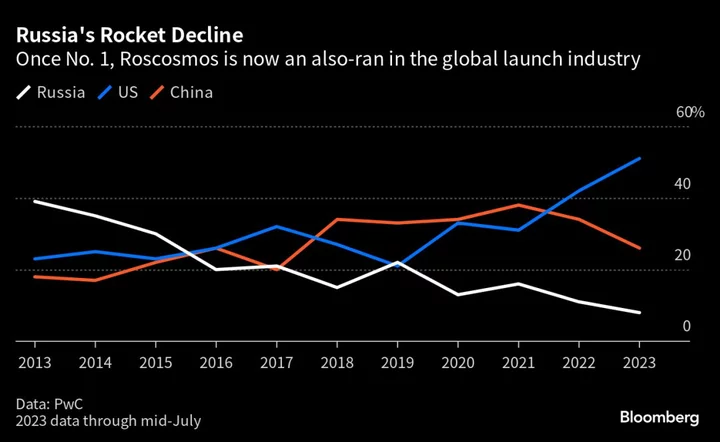
Russia Seeks to Return to the Moon After Almost 50-Year Break
Russia is set to return to the moon after nearly 50 years by sending an uncrewed lander toward
2023-08-11 01:55
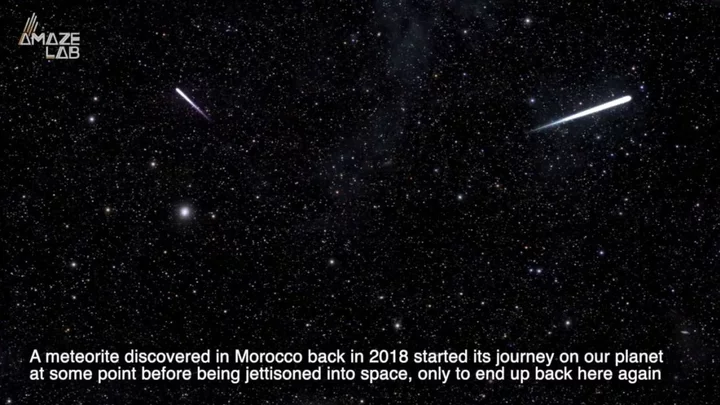
Scientists discover 3,000-year-old arrowhead made from a meteorite
An arrowhead believed to be 3,000 years old was made from the iron of a meteorite, according to scientists. The rare Bronze Age artefact was found near Lake Biel in Switzerland during a 19th-century excavation near a pile-dwelling station at a site in Mörigen (900-800 BC) before it was acquired by the Bern Historical Museum. In the new study published in the Journal of Archaeological Science, the 39-millimeter-long (1.5-inch-long) arrowhead was evaluated along with other Swiss archaeological finds to see if any were created from meteorites. Sign up to our free Indy100 weekly newsletter This arrowhead in particular - which weighs 2.9 grams - was believed to be made from a meteorite that landed in Estonia. “Among just three large European iron meteorites with fitting chemical composition, the Kaalijarv meteorite (Estonia) is the most likely source,” the study said. It is thought this "large craterforming fall event" occurred in 1500BC during the Bronze Age and produced many small fragments. At this time, humans used the iron from meteorites, before they later learned how to smelt iron from oxide ores. "Archaeological objects made of meteoritic iron are extremely rare," the Bern Historical Museum said in a press release. Only 55 objects are known from the whole of Eurasia and Africa, and these come from 22 sites. Have your say in our news democracy. Click the upvote icon at the top of the page to help raise this article through the indy100 rankings.
2023-08-11 01:19
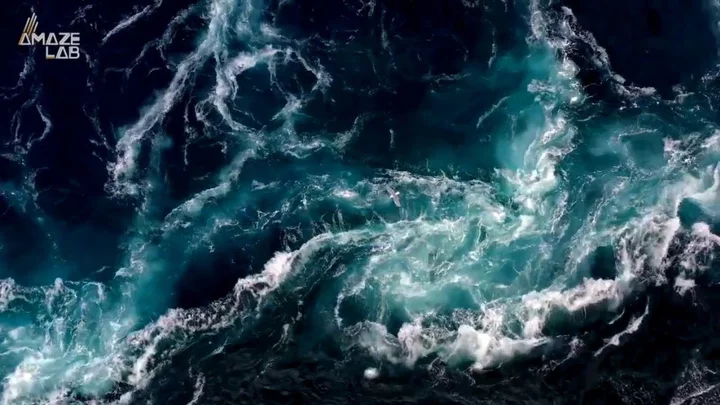
Never before seen ecosystem discovered thriving beneath ocean floor
Deep underground within the Pacific ocean, scientists have made a surprising discovery, which could significantly expand our understanding of marine life. Researchers found an entirely new ecosystem when turning over volcanic crust with the aid of an underwater robot, showing that even now, nature has many more secrets to unearth. The Schmidt Ocean Institute led an expedition with a team of international researchers to investigate a known site in the Pacific, according to Science Alert. Sign up to our free Indy100 weekly newsletter Subsurface fluids were found coursing beneath the ground, while scientists also found an ecosystem of worms, snails and chemosynthetic bacteria. The institute’s executive director, Jyotika Virmani, said: “This truly remarkable discovery of a new ecosystem, hidden beneath another ecosystem, provides fresh evidence that life exists in incredible places.” The new life was found beneath hydrothermal vents, which were first discovered in the 1970s spewing hot fluids loaded with minerals. They were in such a deep, dark location that scientists assumed there would be no life. Ecologist Monika Bright from the University of Vienna said: “Vent animals above and below the surface thrive together in unison, depending on vent fluid from below and oxygen in the seawater from above.” Scientists found tubeworms swimming through volcanic fluids, which makes it easier for them to get around and find new locations. The discovery came on the coast of central America, using a remote-controlled robot 2,500 metres below sea level. Wendy Schmidt, president of the Schmidt Ocean Institute, said: “The discovery of new creatures, landscapes, and now, an entirely new ecosystem underscores just how much we have yet to discover about our Ocean – and how important it is to protect what we don’t yet know or understand.” Have your say in our news democracy. Click the upvote icon at the top of the page to help raise this article through the indy100 rankings.
2023-08-11 00:18

Biden Set to Bet Billions on Tech That Sucks Carbon Out of the Air
The Biden administration is throwing its weight behind technology that sucks planet-warming carbon dioxide out of the air,
2023-08-10 23:26
